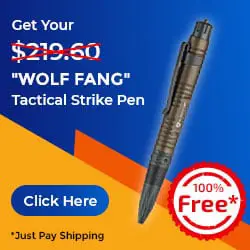FREE Tactical Pen
You can get this lightweight, powerful, and extremely durable Tactical Pen for FREE right now! Just pay a small fee for shipping… But ONLY while supplies last!
If you’re looking to purchase body armor plates, you’ve probably seen the terms “single curve” and “multi curve” several times. What does each term mean? Why does it matter? And, perhaps the most important question to ask, which armor style is best for your body type?
Single curve plates wrap around the torso, providing a basic and generalized fit. Multi curve plates are more ergonomically designed with added contours to provide a more specific fit. Body shape, plate material, and cost will all play a part in determining the ideal body armor for you.
Read on for a more in-depth look at the different types of body armor, the pros and cons of each, and the various factors to consider in choosing your best body armor.
Single Curve Vs Multi Curve: What’s the Difference?
You may have already guessed that the difference between the single curve and multi-curve plates has a lot to do with the shape of the plates. You would be correct, but there are other differences as well. Before we dive into the body of this article, it’s important to understand that there are two main types of body armor: hard armor and soft armor. Both single curve and multi-curve plates are subtypes of hard armor only.
If your line of work or personal preferences tends toward using soft armor, then this probably isn’t the article for you. However, if you need a stronger, more rigid type of armor and you’re wondering which style will fit your body best, keep reading. Let’s take a closer look at a single curve and multi-curve plates so you can get a better idea of the differences between them.
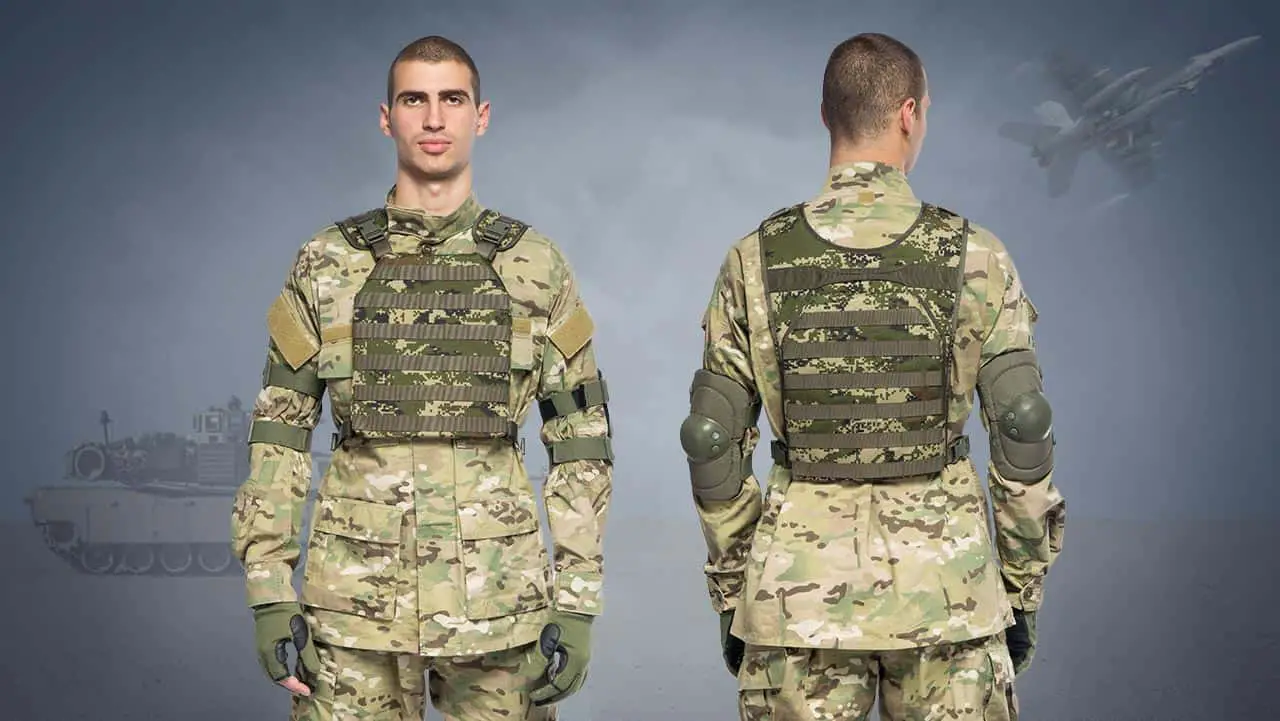
Single Curve Plates
Single curve plates are vaguely rectangular in shape, often with the corners cut to allow for freer arm movement. Their rounded shape allows them to follow the basic curvature of the torso without conforming to specific curves and contours. In appearance, a single curve plate “can be imagined as a rectangular plate cut from a [large] pipe,” according to New Tech Armor. You might also imagine the basic rounded chest plates common to medieval armor.
Single curve plates usually come in standard sizes such as small, medium, or large. Their simple design cannot be easily customized. They work best for average bodies and flat chests but will work for most body types. Most single curve plates only protect the front of the torso, but some may wrap around to protect the sides as well. Some may be designed specifically for the back. Because of their simplicity, single curve plates are often much cheaper than comparable multi-curve plates.
Multi Curve Plates
Multi curve plates, as the name suggests, provide more curves and contours for a more specific fit. There are different kinds of multi-curve plates. Those with only two or three contours may be called “double curve” or “triple curve” plates, while those with four or more contours are usually referred to as “multi-curve.”
Most multi-curve plates also have corner cuts so the wearer can move around and use his arms more freely. Multi curve plates may offer better protection than single curve plates, as they often wrap around the sides more fully than single curve plates. Because multi-curve plates offer the additional contours, they are often more comfortable and provide a closer fit than single curve plates. That said, they also typically come in standard sizes and may not work for everybody type.
Pros and Cons of Single Curve Plates
In this section and the next, we’ll take a closer look at some specifics. What are the benefits of using each type of armor? What are the drawbacks? And how do they stack up against each other? First up, single curve plates.
Pro: Fits Most Body Types
One of the problems with hard armor is that it’s more rigid than soft armor and, thus, more difficult to fit. That said, single curve armor plates are one of the most easy-to-fit hard armor types. They are able to fit a variety of body sizes and chest shapes because they don’t claim to provide a close fit.
When choosing single-plate armor, be sure and try different sizes and styles to find the one that fits best. Remember, they are not designed to provide a close, contoured fit, but they should allow you enough range of motion so that they don’t become a hindrance.
Pro: Has a Wide Range of Uses
In a general sense, you will probably be able to find single curve plates rated for a variety of different scenarios. That does not mean that a single plate will give you equal protection from a high-gauge shotgun and a small-caliber handgun. One of the most important things you can do is identify the type of protection you’re most likely to need because each plate is rated for a specific gun type and caliber. The good news is, once you’ve identified the specific rating you need, you’re likely to find that rating in a single curve plate whatever the rating may be.
Pro: Relatively Inexpensive
Single curve plates are almost always less expensive than multi-curve plates. Of course, the price may vary widely based on material, rating, and even brand. It is possible that a high-quality ceramic single curve plate with a Level IV rifle rating may cost more than a basic multi-curve steel alloy plate. Again, it’s most important to find an appropriate plate for your specific scenarios and environment. But if cost is a major factor for you, chances are you’ll have more options among single curve plates.
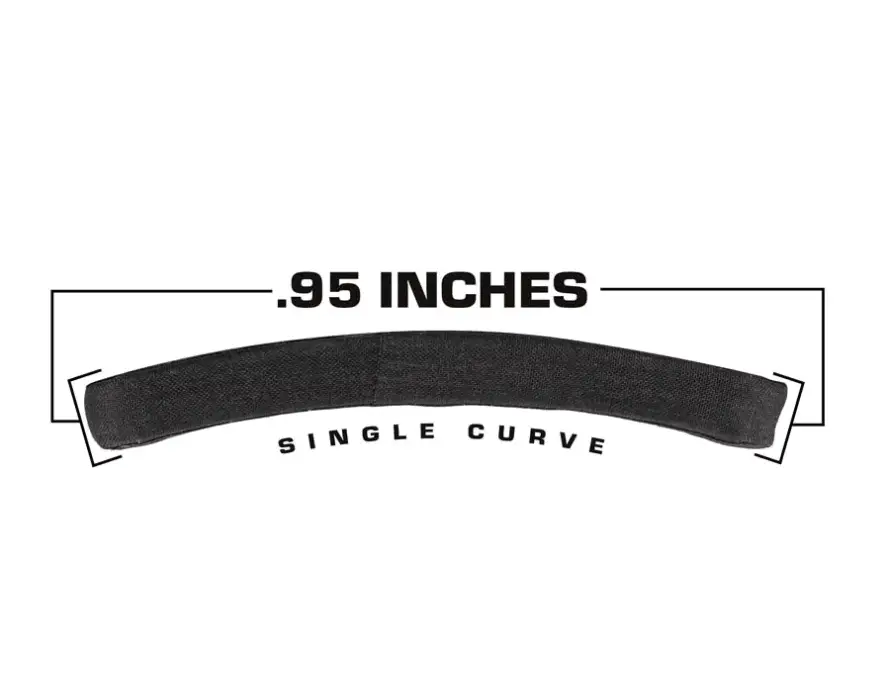
Con: May Be Uncomfortable
Because single curve plates aren’t contoured to your body, they may move around or bump against your chest while you’re in motion. They may feel tight in some spots and loose in other spots. Many single-curve plates must be worn with a layer of padding between the plate and your body. Some may have the padding built-in, while with others you may have to buy the padding separately.
That’s why it’s important to test out any single curve armor you’re considering. If possible, try running, jumping, crouching, twisting, and even sitting while wearing the armor. It may not give you the level of comfort you would prefer, but never settle for a plate that restricts your movement, pinches or digs into your flesh, or causes any other noticeable discomfort.
Con: Deflects Rather than Stops Bullets
This is true of most styles of hard armor. Some of the most expensive types may be able to stop or destroy an incoming bullet, but most will simply deflect it in another direction. This, of course, may cause secondary damage to the surroundings or other people in the area.
Pros and Cons of Multi Curve Plates
If you’re thinking that multi curve plates are more what you’re looking for, let’s take a look at some of their benefits and drawbacks as compared with single curve plates.
Pro: Closer, More Comfortable Fit
Because of their anatomical design, multi-curve plates are usually much more comfortable to wear than single curve plates. The contours fit more closely to the natural shapes of the body so the armor doesn’t shift around as much. This more comfortable fit provides several benefits. Firstly, it increases the chance that you’ll actually wear it on a regular basis. If your armor is poorly fitted and uncomfortable, you may decide it isn’t worth the effort to wear it. The more comfortable fit will also lessen your chances of fatigue from wearing the armor, which in turn will keep you alert to your surroundings and improve your response time should any hazards arise.
Pro: Greater Protection
Many styles of multi curve armor extend to cover the sides, shielding a greater part of the torso region. This increased protection can be vital in situations where you’re being shot at from multiple angles.
Pro: Improved Flexibility
Though the armor itself is inflexible, the more natural shaping of multi-curve plates allows the wearer a greater range of motion than single-curve plates. Being able to move freely in itself provides an added layer of protection in a shooting scenario.
In addition, having more flexibility will improve your response and reaction time to any situation that comes up. It will also improve your stamina if you don’t feel like you’re fighting against your armor all the time.
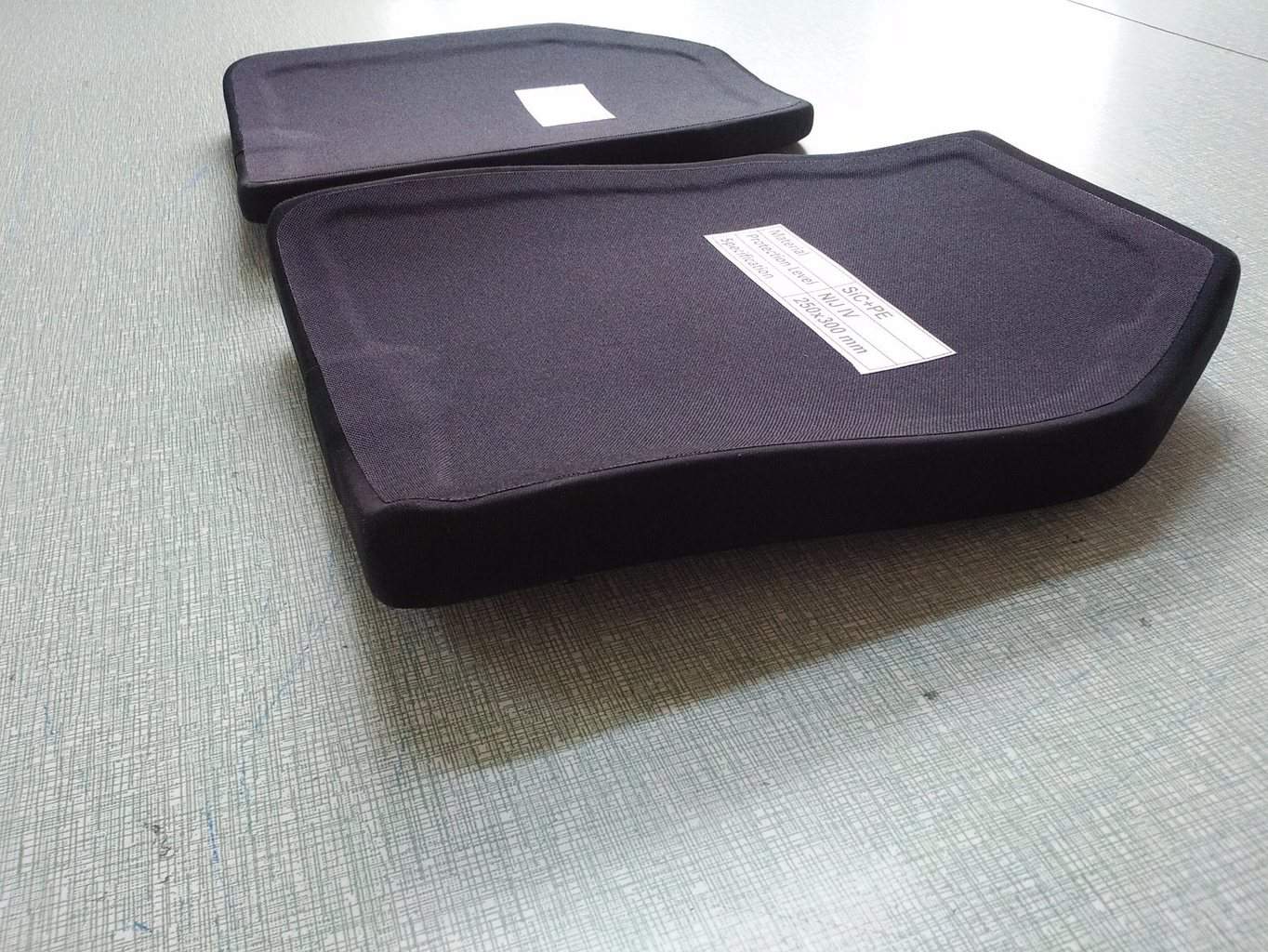
Con: Won’t Fit All Body Types
Since multi curve plates are designed with more specific dimensions than single curve plates, it may be harder to find one that fits your specific body type. Multi curve plates are slightly more customizable than single curve plates, but they still come in standard sizes with preformed contours. It’s possible that you’ll be able to find a multi curve plate in a size that will fit you, but if you’re obese or especially curvy, you may have a more difficult time. As always, make sure to try the armor thoroughly before buying, testing the fit and range of motion by running, jumping, and squatting.
Con: Deflects Rather than Stops Bullets
As with single curve plates, multi curve plates usually only deflect bullets as opposed to stopping them. Whereas other types of armor may destroy or even absorb bullets, multi curve plates will send them ricocheting in unpredictable directions. Of course, ricocheting bullets can cause damage to surrounding structures, injure other people in the area, and may even hit an exposed part of your own body. Keep this in mind if you choose to buy hard armor, whether single curve or multi curve.
Which Type is Right for You?
So now we come to the big question: which type of body armor is ideal for you? Is your body type more suited to single curve plates or multi-curve plates? Ultimately, you’re the only one who can determine which armor type is best for you. Everybody is different, and there’s no way to determine the best set of armor without testing out different options. With that in mind, let’s look at some ways you can try out different pieces of armor to determine the best fit.
The Initial Fit: First Impressions
Always try out a new piece of armor before buying it. If you’re deliberating between the single curve and multi-curve plates, try them both. Compare them against each other. Which one seems to provide a better fit for your body type? Which one just “feels” right? Remember, this may take some trial and error. Don’t be afraid to try different sizes, even if a certain piece doesn’t look like the appropriate size. Both single curve and multi-curve plates can be deceiving in terms of appearance. When you’ve found one piece, or several, that seem to fit better than others, it’s time to see if they stand up to a bit more rigorous testing.
Check the Plates in Motion
This is perhaps the most important part of testing out the armor. Spend some time going through a range of different moves and motions to make sure the armor doesn’t inhibit your flexibility. Running, jumping, and crouching are all great ways to test your mobility while wearing the armor. All of these actions and more may be necessary for a shooting scenario, so you want to make sure the armor doesn’t heavily impact your ability to get around and react to quickly changing situations. It’s also a good idea to try less intensive activities, such as walking and even sitting. If you expect to wear the armor for long periods of time, it’s essential to make sure it’s comfortable, or at least tolerable, during normal activity levels as well.
Fatigue Level
Some armor plates are heavier than others. Obviously, the heavier the armor, the more likely your body will become fatigued from wearing it. Try to gauge not only how the piece fits but how heavy it feels. Consider your own levels of fitness, endurance, and strength. Try to imagine wearing the piece for hours at a time and be honest about whether you think you could do it without becoming fatigued.
Overall Comfort
After testing several plates against each other, checking for fit, range of motion, and weight, you should have a pretty good idea which piece fits the best. If you’re not sure yet, you may want to try each piece a second time. Whichever piece provides the greatest fit and comfort throughout a range of activities, whether a single curve or a multi-curve plate, is the ideal piece for you.
Do You Need Body Armor in the First Place?
There are many reasons a person may want to invest in body armor. Obviously, for professions like police and military, body armor may be a necessary part of the uniform, and these professionals may want to own a personal setting as well. But what if you’re not a police officer? What if you’re not in the military? Could you still benefit from having your own set of body armor?
The truth is many professions are more dangerous than we may realize. Think of all the stories you hear on the news of gas station break-ins, jewelry store theft, bank robberies. If you work in one of these places, or if you have any type of job in a bad part of town, it may be a good idea to consider wearing body armor. Another consideration is survival preparedness. If you’re a prepper, you may want to have your own set of armor along with your other supplies. You may even want to have a set of armor for each member of your household.
Whatever your reason for researching body armor, it’s important to understand the different types available and think about what you need most from your armor. In the following sections, we’ll take a closer look at some of the many different factors to consider when choosing body armor.
What About the Material?
Before diving into our big list of things to keep in mind when selecting your body armor, let’s first take a look at the different materials used for making it.
Aramid Fiber
Single curve and multi-curve plates are rarely made of aramid fiber (such as Kevlar), but it is worth mentioning because it is the primary material used for making soft armor. This super tough material will stop a bullet in its tracks, absorbing its energy so the damaged bullet will simply fall to the ground.
Steel
Most hard armor pieces, particularly single curve plates, are made of steel or other metal alloys. Steel is a great all-around hard armor material because it is thin yet highly durable. It provides a long-lasting, dependable layer of protection from a number of different threats, and at a relatively low cost when compared with other materials. The main drawback is that steel plates are typically heavy, and they usually cause bullets or bullet fragments to ricochet in all directions.
Ceramic
Ceramic is another common material for hard armor, but it is one of the most expensive. Ceramic plates come in various styles and thicknesses, and they generally command top prices thanks to their ability to stop armor-piercing and rifle rounds better than any other material. That said, ceramic plates require a lot of extra care, and they may be damaged by repeated hits and close-range fire.
Polyethylene
Various types of polyethylene are used for both hard and soft armor. Generally speaking, they are exceptionally lightweight, but they are usually much thicker than other types of body armor. Always check the rating before choosing a polyethylene plate, particularly if you are looking for armor that can stop green tip rounds. Most polyethylene plates are not capable of stopping these rounds, though they can typically take multiple hits from other types of rounds.
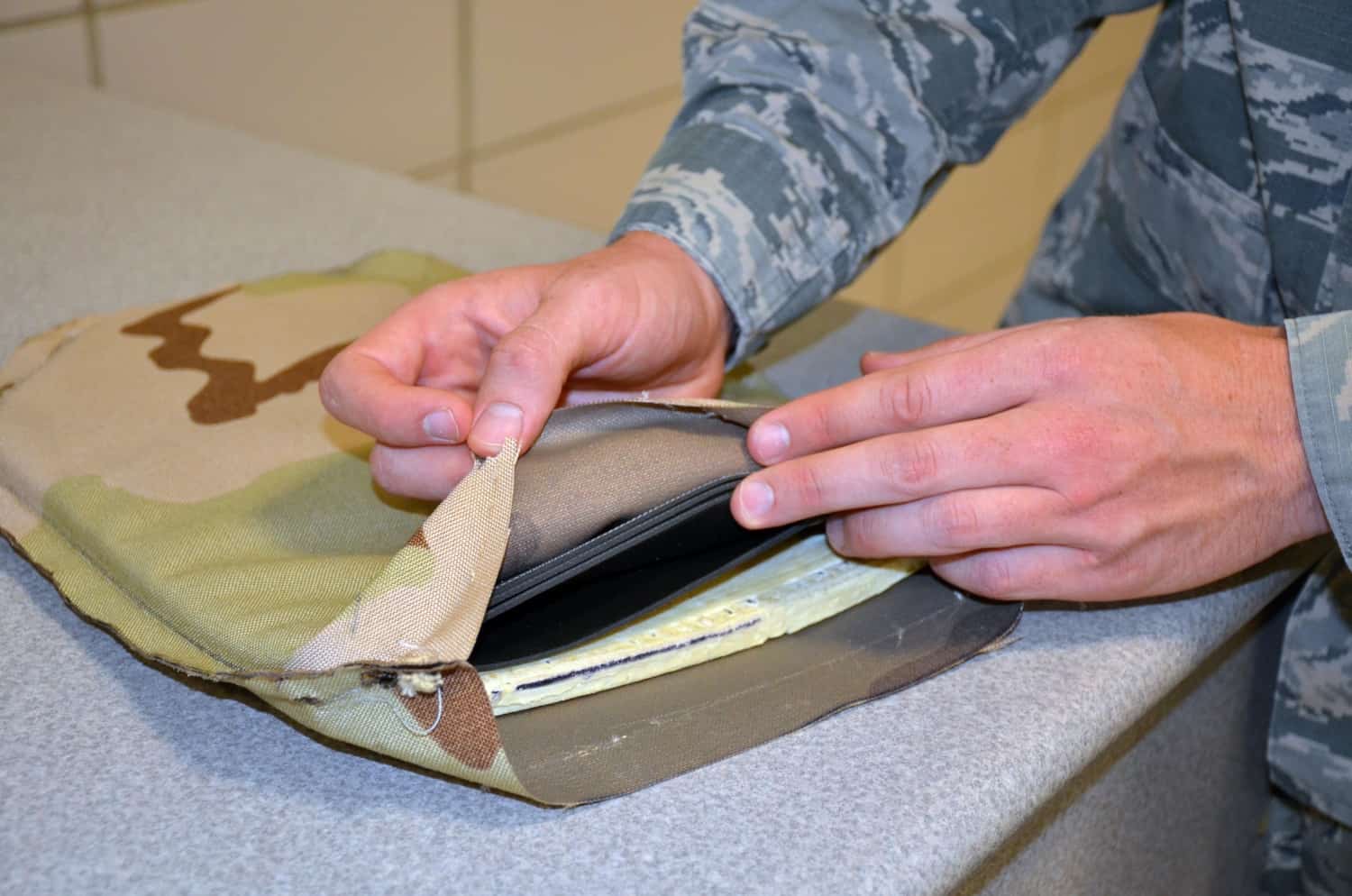
Other Considerations when Choosing Body Armor
So, aside from making sure the armor fits, what are some things you should factor in when looking for a new set of body armor? Since there are so many different options available, it’s a good idea to come at your decision from several different angles. Ask lots of questions along the way, especially of yourself. Some of your top considerations should be:
Protection Level
What sort of threats do you face or expect to face? If you work in a bank or a gas station, for example, you might expect multiple rounds from close range in the event of an armed robbery. If you’re a rural sheriff who has to deal with illegal poaching, you might expect to face fire from a hunting rifle. Do your best to predict and understand the specific threats you’re most likely to face. Most body armor is rated for specific types of rounds and ranges. The more specific you can be, the better your chances that it will protect you when you need it.
Environment
If you work in an outdoor or un-air-conditioned environment, especially in hot climates, you may want to choose a more lightweight armor. Try to consider your usual environment, what weather conditions you’re likely to face, and how active you have to be in poor conditions.
Flexibility and Comfort
As discussed earlier in this article, being able to move around and feel comfortable in your armor is paramount. Having full range of motion and command of your reflexes during an emergency may save you as much as the armor will.
In addition, inflexible and uncomfortable armor may cause fatigue over time, which in turn may tempt you to stop wearing the armor. What’s the point of having it if you’re not wearing it when you need it?
Concealed or Exposed
Some armor is meant to be worn over clothing, while other types can be worn under clothes. Do you need a specific type for your job? Police and military generally wear their armor exposed, but for the common gas station clerk, wearing a full armored vest over your clothes may be seen as unusual or even threatening. Consider your typical work environment and surroundings. Generally, if you work alone or in a less-visible position, exposed armor may not be a problem. But if you work directly with customers or clients on a regular basis, you may need to invest in a thinner, more concealed type of armor.
Care
As mentioned earlier, ceramic plates in particular are fairly high maintenance. Rough handling and harsh impacts may cause tiny cracks that, in turn, can weaken the entire plate. Ceramic armor has to be x-rayed regularly and any time it sees action to check for these cracks. If you don’t want to deal with these maintenance hassles, you may need a different type of armor. That said, all armor types should be handled carefully. Rough treatment, leaving it out in the weather, not allowing it to dry properly if it gets wet–all of these misuses can cause damage to the armor and affect its performance in a life-and-death scenario.
Cost
Again, multi curve plates are likely going to cost a bit more than single curve plates. Ceramic and unusually thin polyethylene armor will almost certainly cost more than steel armor. And, generally speaking, more cheaply made armor, regardless of the materials used, will be less expensive than comparable well-made armor. Even if you don’t want or can’t afford the premium plates, you should never settle for the cheapest piece of armor you can find. It is possible to find good armor on the lower end of the cost spectrum, but be sure and do your research beforehand to make sure you’re getting a good value, not just something cheap.
Rating
Body armor is tested and rated for specific rounds and scenarios. According to Recoil, the ratings are as follows:
Handgun Calibers
- Level IIA: 9mm FMJ 124-grain bullets at 1,225 fps and .40 S&W FMJ 180-grain bullets at 1,155 fps (six shots)
- Level II: 9mm FMJ 124-grain bullets at 1,305 fps and .357 Magnum JSP 158-grain bullets at 1,430 fps (six shots)
- Level IIIA: .357 Sig FMJ 125-grain bullets at 1,470 fps and .44 Magnum SJHP 240-grain bullets at 1,430 fps (six shots)
Rifle Calibers
- Level III: 7.62x51mm FMJ steel-jacketed 147-grain bullets (M80) at 2,780 fps (minimum of six hits)
- Level IV: .30 caliber armor-piercing bullets (.30-06 M2 AP) at 2,880 fps (single hit)
It can’t be stated enough: try to identify the threats you’re most likely to face and choose your armor rating accordingly.
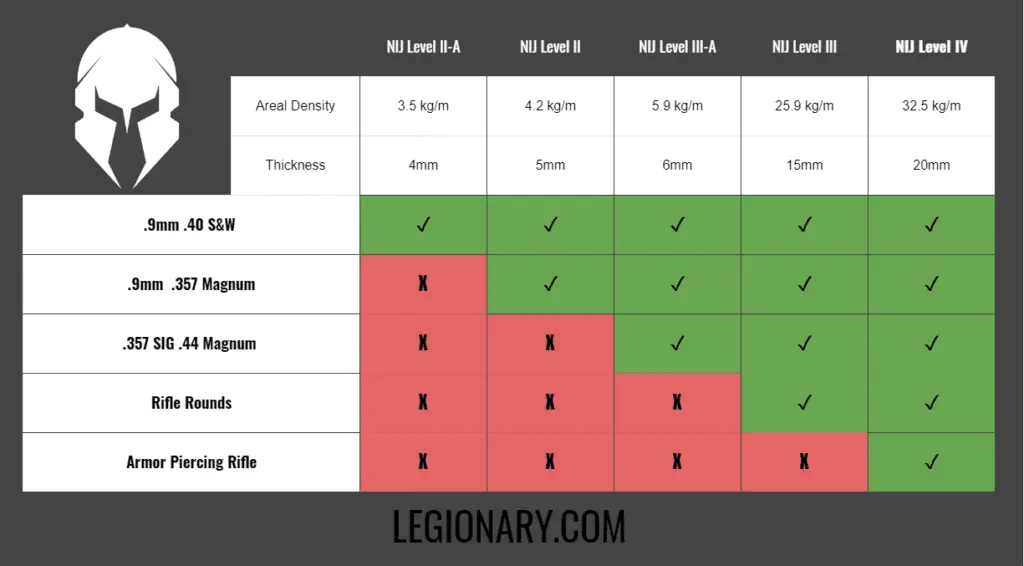
Choosing the Best Body Armor for You
And there you have it. We’ve looked closely at the differences between the single curve and multi-curve armor, as well as the many different considerations to factor in when choosing your ideal armor. The most important thing to remember is to select armor based specifically on the threats you believe you may face, and only expect the armor to perform according to how it is rated. Don’t imagine that a plate rated to handle a blast from a hunting rifle will protect you from repeated, close-range handgun fire. Whether you choose hard armor or soft armor, single curve plates or multi-curve plates, steel armor or ceramic armor–make sure you choose the armor that is best suited to your body type and specific needs.
OUR RECOMMENDED TACTICAL GEAR LIST:
- Best Health and Fitness Tracker, Whoop. Get 1 Month Free: See it here!
- EDC Assisted Opening knife we can’t live without: See it here!
- Best EDC Concealed Carry Pistol: See it here!
- Extreme Performance Morning Dink: See it here!
- Best 3D Printer For Gun Parts and Accessories: See it here!
- Our Top Rated EDC Flashlight: See it here!
- AR Red Dot Sight We Can’t Live Without: See it here!
- Best Handgun Safe For Quick Access: See it here!
- Top Wireless Security Camera For Home Security: See it here!
- The Range Bag You’ve Always Been Looking For: See it here!
- CIA Approved Sharp Shooting Course: See it here!


